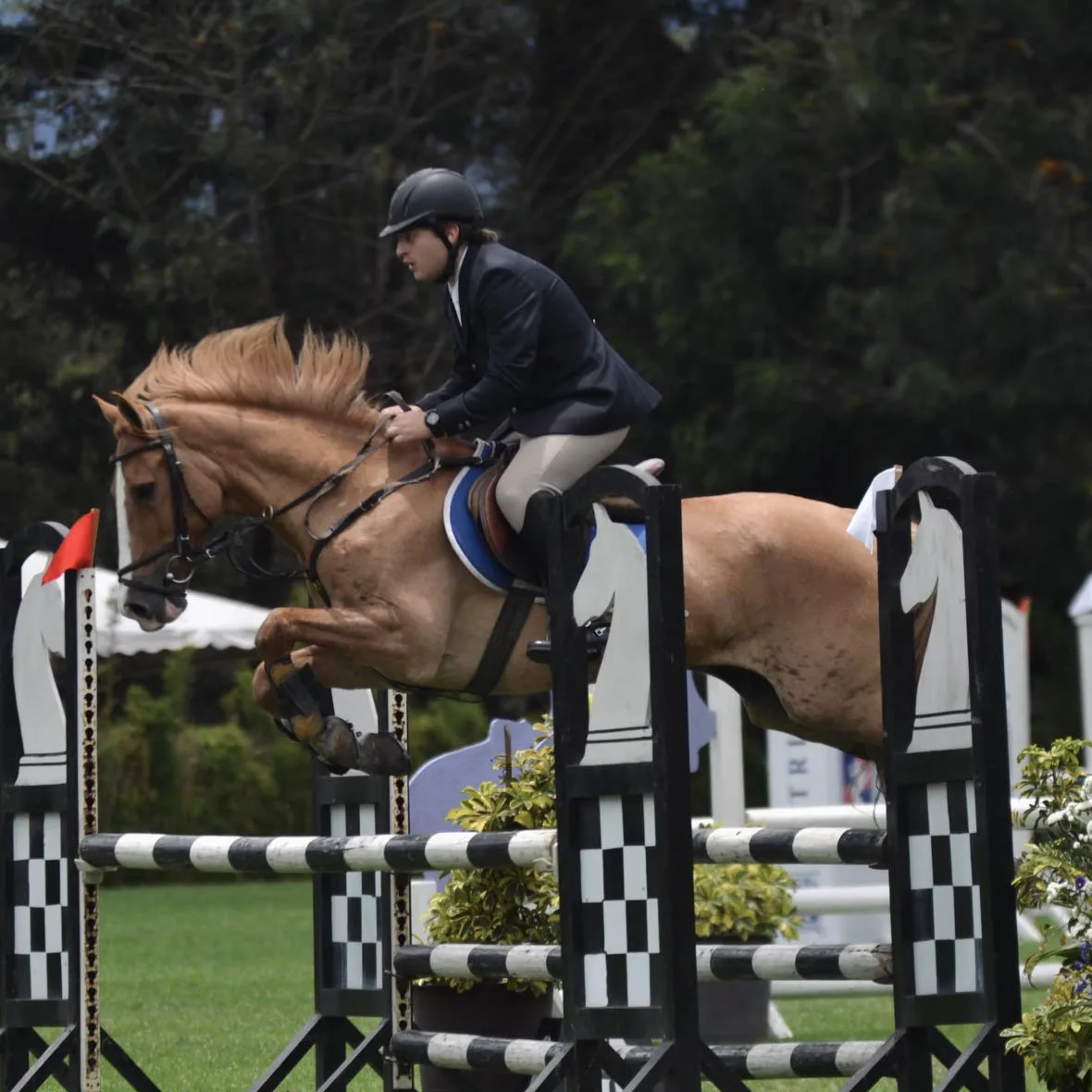Jumping is an exciting part of riding that almost every new rider looks forwards to trying. Many times a rider will then realize their passion is in another discipline like dressage or barrel racing, but that doesn’t stop the initial excitement people feel when they see a jump for the first time.
There are many different types of events that involve jumping and each event uses a specific list of jump types. Showjumping frequently utilizes oxer jumps and multiple variations of a standard jump. Cross country riders will come across variations of standard jumps, and oxer jumps but they will also encounter ‘natural’jumps like ditches.
To help you learn the industry lingo, we have provided a brief rundown on what each of these jump types are, and where you will traditionally find them.
Standard
Standard doesn’t refer to a specific jump but rather the structure used to create one. When you have watched show jumping in the past, you would have seen vertical white posts holding the rail in position. These are called standards. Standards can be used in multiple formations to create a number of different jump types.
To create jump variations using standards, you will also need access to Rails. Rails are generally made of wood or plastic and are used to create the obstacle for a horse to jump. Rails are also referred to as poles and they can be used interchangeably.
The different jump variations that use standards include vertical jumps/uprights, cross rails, and oxers. A vertical jump is a very simple setup. It uses two standards placed one rail width apart. The rail is then placed horizontally between the standards at your designated height.
The rail is placed on the standards using jump cups. Jump cups are small shelf-like objects that attach to the standard. They are shallow enough that if a horse knocks them they will fall from the jump to prevent injury to the horse.
A cross rail is very commonly used as a first jump. To create a cross rail, place two standards on either side of your jump, then place 2 poles horizontally between the standards. You do this by placing one end of the pole in the jump cup and the other end on the ground. Do this on each side of the jump to create an x shaped jump. This jump is much lower in the center making it a great jump design for a first-time jumper.

Oxer
An oxer jump is another variation using standards. This jump utilizes two separate jumps to create a longer area for the horse to hurdle. By this, we mean that the horse will need to jump both obstacles at the same time and will not be able to place their feet in between the two jumps. This is a very common showjumping obstacle. An oxer has two common variations, the square, and a rising jump.
A square oxer means that both jumps are placed at the same height. This forces the horse to make a larger jump with a much wider spread than a vertical jump. The square oxer is often a more challenging jump to master than a rising oxer.
A rising oxer means that the jump at the front is lower than the jump at the back. This jump is often easier to master than the square is it mimics the natural motion of the horse when jumping. A horse starts lower to the ground and then curves over a jump. Rising oxers match this motion making it a lot more natural for your horse.
Ditch
A ditch jump is exactly what you think it is, a ditch dug into the ground. These are very common jumps in cross-country events. A large number of horses do not like jumping these obstacles and will often refuse the jump. It takes a lot of practice to build up your horses confidence to the point that they will make this jump for you.
Another place you may find these types of jumps is when you are trail riding. Ditches are naturally occurring in many places and can seem like a very fun and dynamic jump for you to practice on. However, if you find a natural ditch be sure the ground surrounding it is solid and will not give way under your horses weight. As with all jumps, ditches can be very dangerous, especially if they have not been crafted by a professional. Use precaution if you come across one on the trails and remember that it is probably best not to jump these naturally occurring obstacles and make use of your local clubs course.
There are many other types of jumps that you will encounter during your jumping career. These may include hedge jumps, triple, gate jumps, water jumps, or even combination jumps. However, the ones we have listed are the ones you are likely to encounter as a beginner and are great choices to practice your skill.
We hope this has helped you understand the world of jumping terminology and assisted you on your way to becoming a jumper yourself. Remember to have fun on your journey and that this skill takes time to master. It is best to get instruction from a professional to help you along the way, especially if you are new to the world of jumping.
